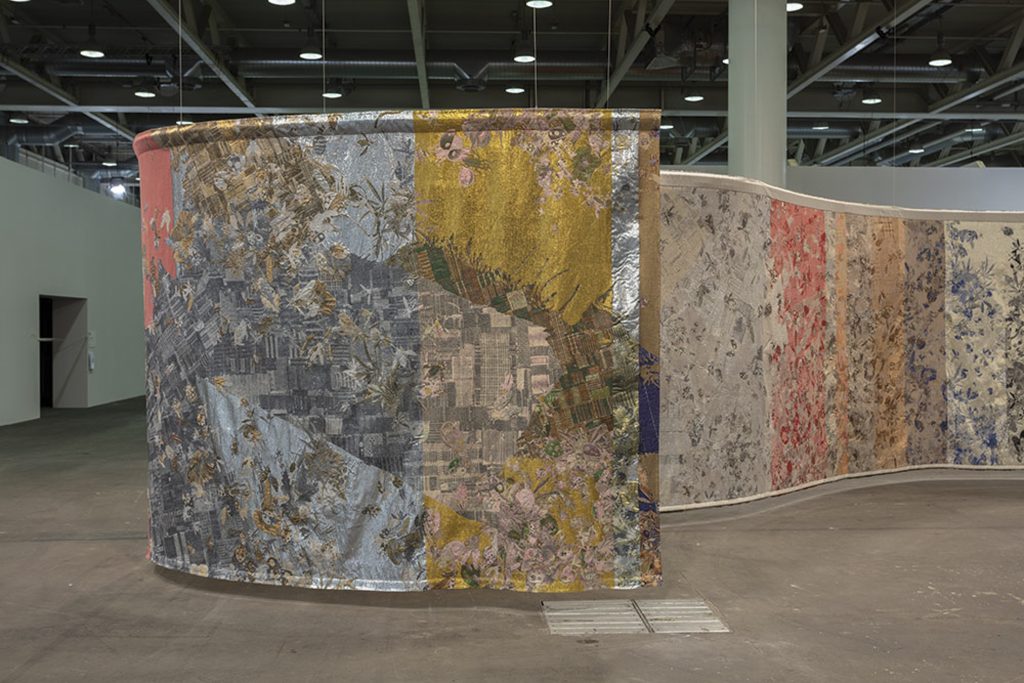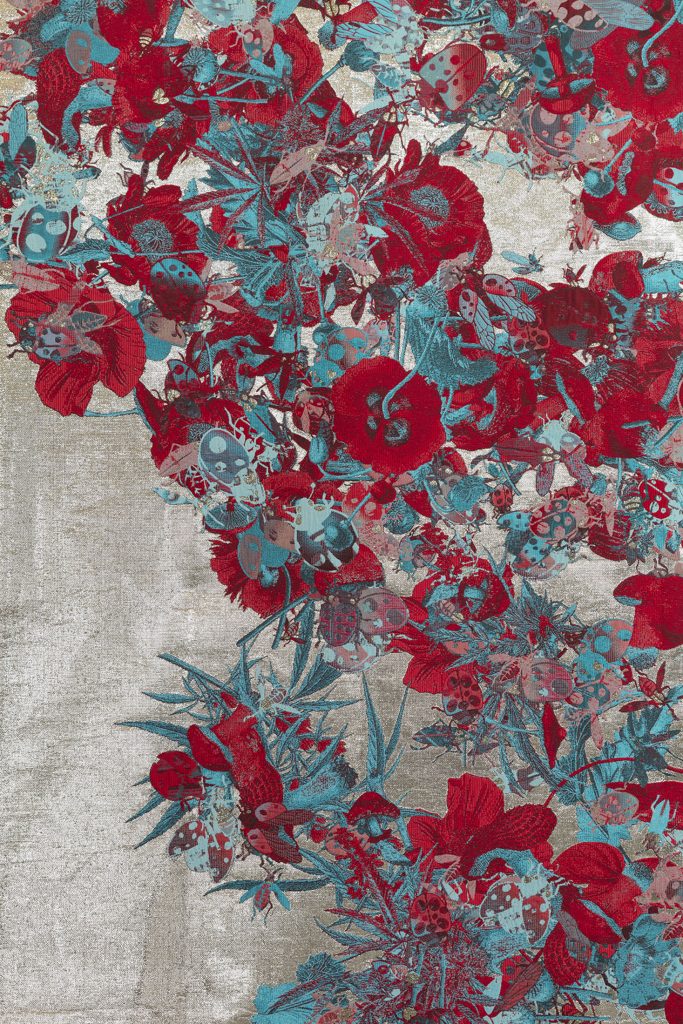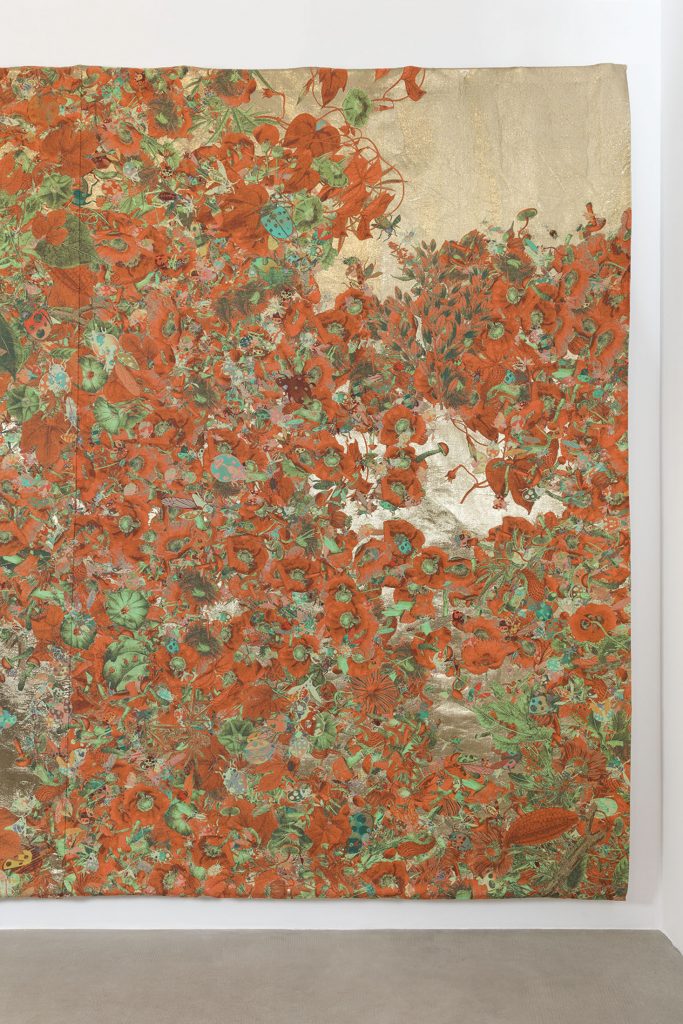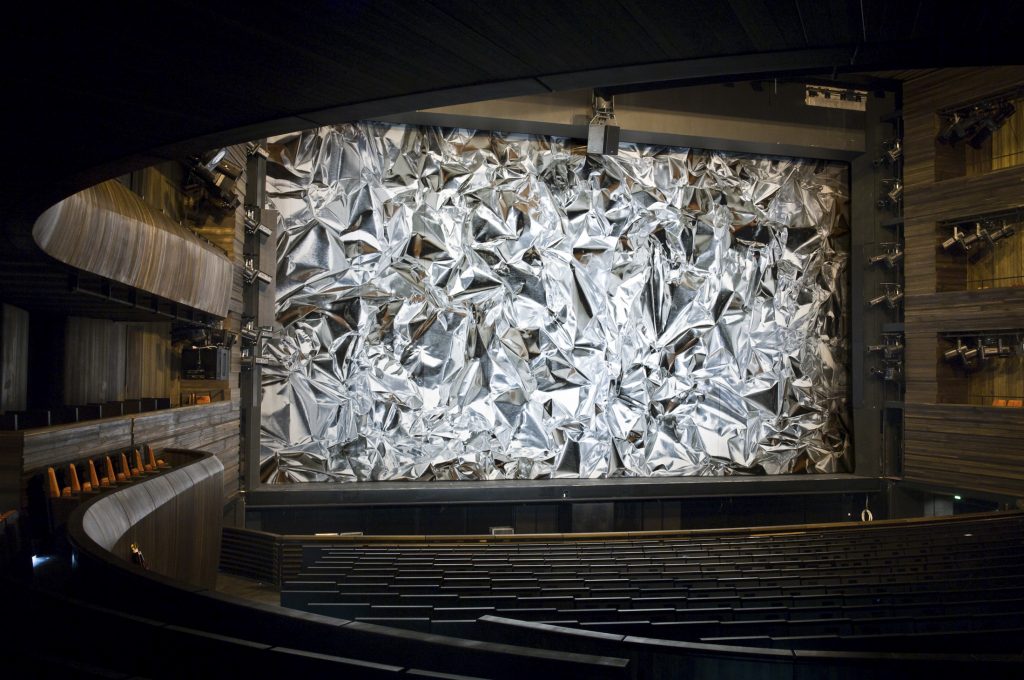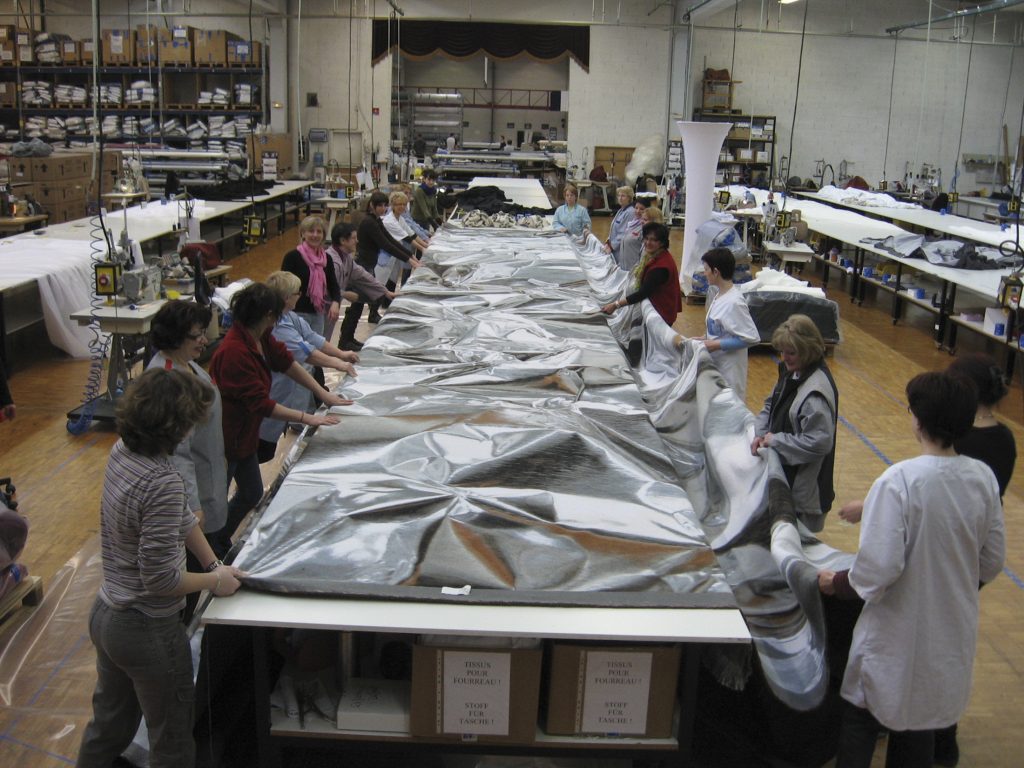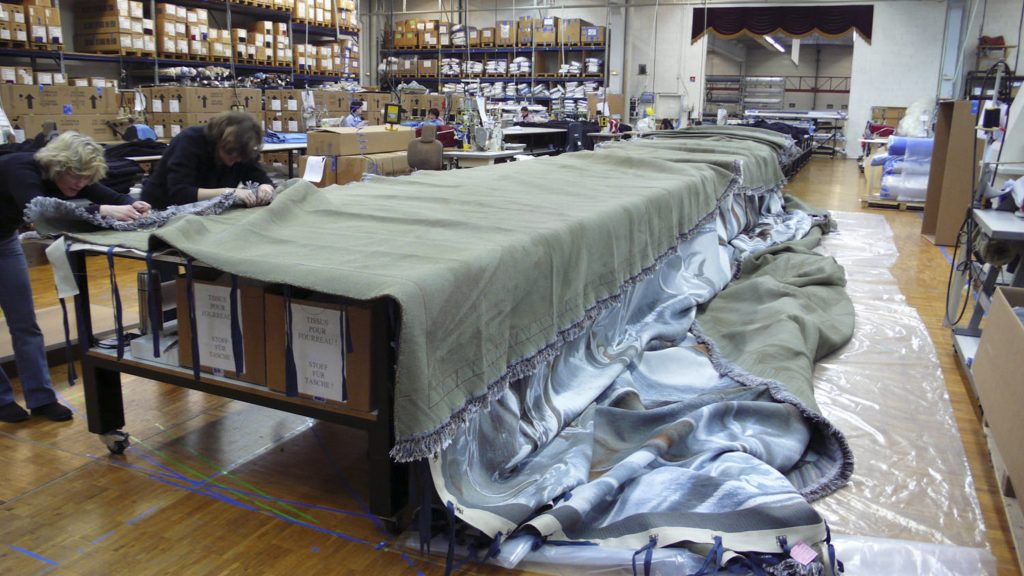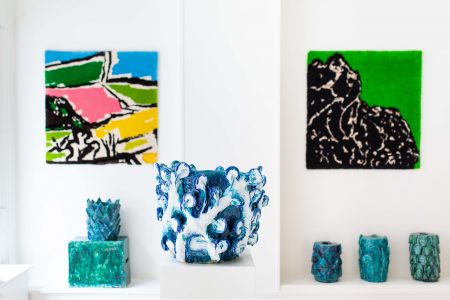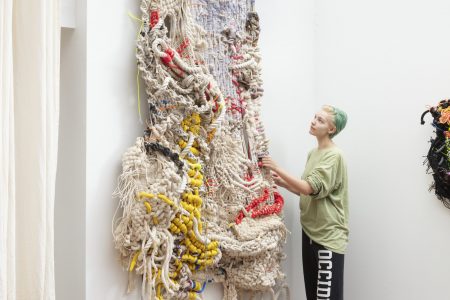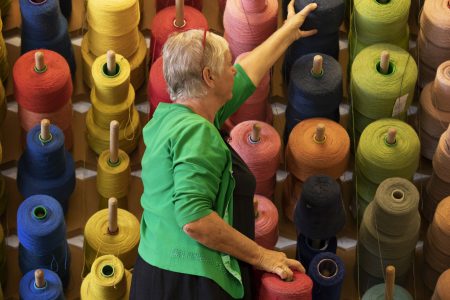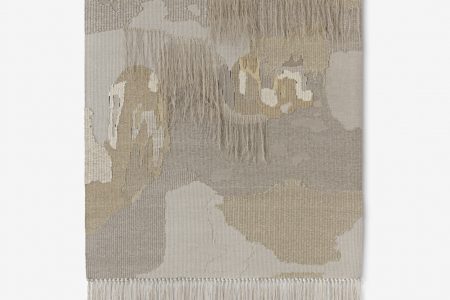Pae White: Ephemeral Attraction
Playing with scale and contradiction, Pae White is unafraid to push the limits of what a material or tool can do. Her ability to capture fleeting moments like a puff of cigarette smoke or the reflection of shiny tinfoil within a woven surface challenges our perceptions and adds a bit of magic into our everyday lives.
TLmag: When did you start to incorporate tapestry and textiles in your work? What is it about this medium that attracts you? How does it convey meaning or reveal ideas you are interested in?
Pae White (PW): I have always been interested in and collected textiles. It always seemed like a format in which one can simultaneously generate mass and compactness. I also find the sense of ad-infinitumness intriguing; the idea that something could go on forever, which I believe is implied in textiles. Around 2001 I was asked to develop a weaving with Taller Mexicano de Gobelinos in Guadalajara. Rather than make a woven version of a drawing, or a painting, which seemed to be their primary focus, I chose to do something that would challenge the loom and its abilities to interpret something elusive such as reflectivity, or depth. By choosing crinkled tin foil as the subject of my first tapestry with the workshop, I also asked questions of the material, in this case wool. Understanding that wool doesn’t know what it means to be silver or to reflect, I tasked it with the challenge of being all those things that it was not, but maybe these were questions that wool could have dreams about, dreams about being transcendent or magical.
Eventually, I found an industrial loom in Belgium that had the ability to produce large scale pieces but with a shorter amount of production time. However, my concerns remain the same in that I find that it’s important to put forward projects that challenge the assumptions of equipment and what the equipment might think that it knows. In the case of the industrial loom, we are often pushing it to produce pieces that feel as if they were made painstakingly by hand, even though the material is practically spit out by a loud oily monster in rapid-fire succession. Through this contradiction, questions about time and illusion hopefully come into play.
TLmag: When working on a large-scale tapestry piece, what is the process? How important is scale when making a tapestry piece?
PW: There are different ways that we develop the tapestries. Sometimes we start with a manipulated photo-based image, or a collage of images which are woven with a combination of cotton and polyester. However, a few years ago we made a drastic departure from the phot-based approach and focused more on a combination of custom software and almost entirely metallic threads. With the metallic threads I was interested in making something that was simultaneously over the top in its lushness and neutral in the way that the pieces can be quite tonal.
The custom software we developed allows us to introduce specific parameters which determines the final output. These parameters can include density of image areas, or the use of certain threads that are flat, or contrasting colours, depth of reflectivity etc. We are always having to work with a balance of threads that have varying degrees of flexibility. The software helps us stay on top of that. The only downside is that the software can also generate millions of variations and I always feel compelled to consider every single option. Once the image has been selected, we create large, 2.7-metre long evaluation samples where we check colour, weave construction, etc. Some projects require 20 to 30 evaluation samples before they can finally be woven.
The loom that I am currently working with is close to 2.7 feet wide. I use this as a standard height so we can minimize the distraction of seams. This also means that the pieces are inherently monumental. Going back to the idea that something can be both massive and compact really interests me. Also, the tradition of monumental tapestries depicting historic subject matter of great importance interests me as well. The subject matter of my tapestries involves light, depth and slight shifts in movement, or the illusion of labour etc. However minor these concerns appear, they are huge for me.
TLmag: You seem to work easily between the handmade and technology––or transforming typically handmade materials through technology. Would you talk about this?
PW: I think it’s interesting to work in radically different scales and with material extremes, simultaneously. I might be working on a massive outdoor project at the same time that we are tooling small areas of paper clay in the studio. It’s important for me to have a balance of both small indoor studio production and large scale outdoor, architectural works happening together. Often these ideas invert or cross pollinate in surprising ways. I am frequently having projects fabricated outside of my studio and even outside of the U.S. but we will simultaneously have extremely hands-on projects taking place in the studio.
TLmag: Your work has been described as “merging art, design, craft and architecture.” Would you talk about this—how these practices come into play in your work and the importance of this overlap and convergence?
PW: I have heard this reference a lot in my career which baffles me. I feel very strongly that I am always and only making art. I use the language of design as a raw material in my work, or perhaps I will play with the assumptions that accompany familiar objects. But these are simply tools for me, much like I might use clay or red paint or a ruler. I have never set out to purposely converge any method of production.
Cover Photo: Smoke Knows, 2009, installation 1301PE, Los Angeles, US.
